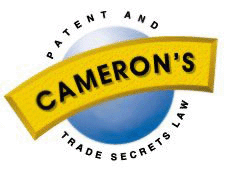
Case Comment
citation(s): (1903), 20 R.P.C. 123 (per Buckley J.)
 Case Comment |
Reynolds v. Herbert Smith &
Co. Ltd.
citation(s): (1903), 20 R.P.C. 123 (per Buckley J.) |
copyright 1997 Donald M. Cameron, Aird & Berlis
"Now, the idea that leads to an invention is, in my opinion, no part of the invention. The idea, or the recognition of the want, stimulates the inventor to do something else. It is the something further which he does which is the invention. The mere idea, or the conception that it is very desirable to have a patch, such as that you can put it on when you have not got the materials in the workshop is not patentable. What is patentable is a new way of doing that thing, either by way of a new article to be used, or a new method of putting it on, or some combination which would be capable of being patented. I cannot find that there is anything of that sort here. The only thing, so far as I can see, that the Patentee did, or can suggest that he did, was this - if you take a proper sized piece of a perfectly familiar article of commerce and put it on in a particular way, it will stop on. He does not claim the way of putting it on. He claims the article. It seems to me that in that there is no subject-matter for a Patent. I do not see that he suggests any act to be done - because he does not claim the putting it on - which will produce a new article or a new result, or enable you to produce an old article or an old result in a new way."
Return to:
Cameron's IT Law: Home Page; Index
Cameron's Canadian Patent & Trade Secrets Law: Home Page; Index